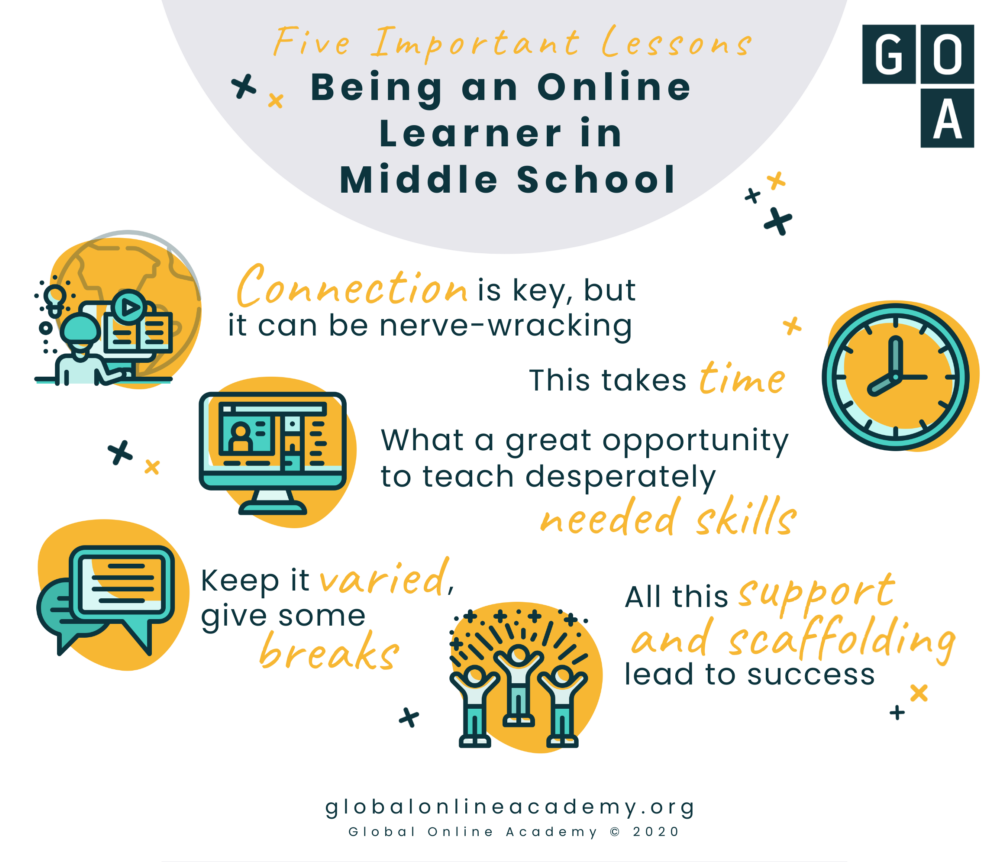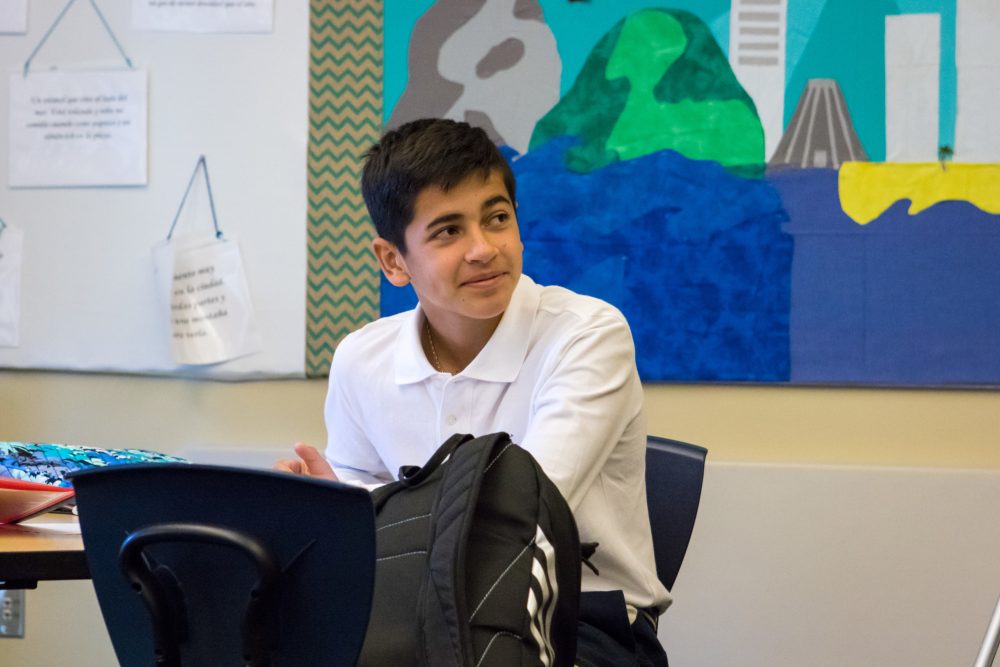Five Lessons for Learning Online with Middle School Students
Last fall, when I was teaching at GOA member Lincoln Community School, my 7th grade students and I participated in a course in GOA’s Learners for Life Series, The Learning Brain. This series is designed to support students in grades seven to nine in building lifelong learning skills. The goal of this particular course was to help students understand how their brains acquire and retain information; in essence, they were learning about how they learn.
As their teacher, I had a broader goal. I wanted to give them a well-supported, immersive experience in online learning so that I could learn how they approached it and what they gained from it. To capture their perspectives, I asked them how they were feeling about online learning before we began, watched them as they worked their way through the course, and gathered their reflections once the course was over.
With so many middle school students now learning in online and hybrid environments, these lessons are more important than ever.

Lesson 1: Connection is key, but it can be nerve-wracking.
When I asked what they were most excited about before this experience, students identified the opportunity to work with others around the world. They were interested in hearing different perspectives and taking learning out of the confines of our classroom. However, they were also nervous before we started because, as many of them stated, they “didn’t know what to expect.” We made time to dispel misconceptions about a global online course by explaining that the discussion forums used in this course were not “open” to the public and were monitored by teachers to prevent any inappropriate content. We were then able to move into the course with a feeling of excitement and curiosity.
Lesson 2: This takes time.
As I planned for this experience, I thought I would put aside about three-quarters of my class time for the two weeks of the course (note: in 2020-21, GOA has shortened these courses to one week). That seemed sufficient to move through the material and leave us enough time to do at least a little work on our current classroom unit. That plan was not to come to pass.
Not only were students moving more slowly than I had anticipated, but it took many of them extra time to reorient themselves when we logged in each day. They needed to remember what they had last done, open the appropriate tools, and settle into the online learning space. After a few days of rushing them along, I eventually accepted this reality and gave them all of our class time to work on the online course. A routine I initiated at the beginning of each class:
- A specific routine of where to go upon login
- A quick, whole-class “check-in” after 2-3 minutes to see where everyone was
In August 2020, GOA surveyed participating teachers like me, and the majority reported that the course required 30-45 minutes of student engagement daily. Most teachers integrated the course into class time, and 85% of teachers reported that the teacher prep work required to make this course a success was less than two hours.

Offering time and support for development of online learning skills is a critical element of supporting middle school students as they navigate an online course.
Lesson 3: What a great opportunity to teach desperately needed skills!
While students moved through the course, my co-teacher and I observed many behaviors that required intervention. For example, when watching a video that they thought was slow, some students would skip ahead a few minutes with no concern about what they had missed. We also noted that students, when confronted with a page of text that contained hyperlinks, went immediately for the link without glancing at the other text.
We did some explicit instruction on strategies that can change these habits. Two examples:
- Speed up a video rather than skip ahead.
- Slow down and read all the instructions on a page before clicking on a link.
Lesson 4: Keep it varied, give some breaks.
As any middle school teacher knows, our students can get antsy and can find it difficult to do the same thing for too long. In this case, the instructor of The Learning Brain did a great job gathering valuable information that students could interact with in a variety of ways.
Even so, to be sensitive to screen time, we took several “brain breaks”or “learning chats” where students actually got out of their seats and interacted with each other to help keep the momentum when they returned to the course. The results were two-fold: students were able to get some of their energy out and were able to reflect on what they were working on with their peers in the classroom. They were able to go back into the course refreshed and with some new perspectives to bring to their work.
Lesson 5: Support and scaffolding lead to success.
While it did require support and attention to help students navigate issues and keep themselves on track, the benefits were high. Students learned something new about themselves as learners, both because of the content of the course and because of their experience learning online. They learned concrete strategies for organization and interaction with online content that they will need in future learning experiences, both online and in our bricks-and-mortar schools. Most importantly, students reported feeling empowered that they were able to move through the course independently.
GOA’s Learners for Life Series for grades 7-9 includes five different short online courses, each focused on a critical lifelong learning skill. The series is available to GOA member schools at no additional cost. In response to feedback from educators like Jessica, we have developed resources for teachers who want to bring their students to the series: a teacher playbook and pre-course Zoom sessions for teachers. To inquire about GOA membership, click here. For more free articles and resources on high-quality online learning, visit our COVID-19 landing page.
